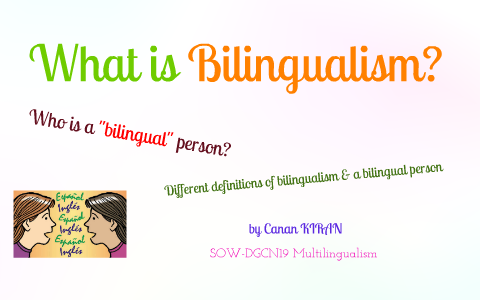·
What is Modernism?
Modernism
is a period in literary history that started around the early 1990s and
continued until the early 1940s. This movement rejected traditional values and
techniques and emphasized the importance of individual experience. This
movement has also been driven by various social and political agendas. The modern Age has been called “the age of anxiety” Modernism includes Imagism,
Cubism, Futurism, Dadaism, Expressionism, Surrealism, Symbolism, Impressionism,
and Existentialism. After 1900, we could find a lot of tremendous activities in
the field of poetry as well as in the other field of literature.
·
Characteristic of modern poetry
Modern
poetry often features disrupted syntax which refers to irregular sentence
structure. Intertextuality is also an important aspect of modern poetry. In
addition, many modern poems feature a stream of consciousness and use of
allusion and multiple associations of words which are borrowed from other
culture. The modern poet also conveys a sense of alienation from the worlds.
The most common characteristic of modern poetry is open form and free verse
which is quite different from the fixed forms and meters of traditional poetry
as well as it is marked by fragmentation and juxtaposition.
1.) ‘The Embankment‘- T. E. Hulme
Once, in the
finesse of fiddles found I ecstasy,
In a flash
of gold heels on the hard pavement.
Now see I
That
warmth’s the very stuff of poesy.
Oh, God,
make small
The old
star-eaten blanket of the sky,
That I may
fold it round me and in comfort lie.
An analysis of this short poem, available on
the Internet, says: Flann Gentleman reflects on his passage and how he found
pleasure in worldly social activities such as musical gatherings and dances.
Here the “Flash of Gold Heels” represents beautiful women and the “hard
pavement” represents the hard and rough side of society. The poem depicts the
poverty of the people through the use of metaphors like ‘fall gentleman’,
‘fidelity of fiddles’, ‘flash of golden hills’, ‘blanket eating star’. A symbol
like the "star-eating blanket" here shows that the stars, in general,
represent beauty in the dark sky and we can also say that the star represents
hope in a situation of darkness.
2.) "Darkness" - Joseph Campbell
Darkness
I stop to
watch a star shine
in the bog hole
-
A star no
longer, but a silver
ribbon of
light.
I look at it
and pass on.
In this poem, the poet talks about the night
scene and the importance of the stars in the black sky. The theme of this poem
seems to be quite the opposite of the Victorian theme of poetry. There is the
word “star” which signifies the beauty of the stars in the dark sky and the sky
without the stars is all dark and “darkness” itself is a symbol of “fall”. But
the star is a symbol of brightness and hope. The title of the poem as well as
the 1st and 2nd lines of the poem represent the contrast between the dark and
the shining stars, using which he can tell about the illusion of life.
3.) 'Image' - Edward Storer
Forsaken
lovers,
Burning to a
chaste white moon
Upon strange
Pyres of loneliness and
drought.
The dictionary "abandoned" means
"to give up" so here "abandoned lovers" represents the
fall. It introduces the idea of loneliness to modern people. Here is the
sentence "burn abandoned lovers" so here we can say that they are
lost, because T.S. Elliott discusses this in the third part of "The Sermon
on Fire", which introduces the idea of loneliness among modern people.
Here the poet used it as something that burns lovers.
4.) "In a station of the Metro" -
Ezra Pound
The
apparition of these faces in the Crowd;
Petals on a
wet, black bough
This is a very short modern written by Ezra
Pound. It is considered to be the first haiku written in English but lacks the
traditional structure of haiku ... so we can say here that it represents people
who live physically but mentally all of them have died due to their daily hasty
schedule. Through this metaphor, the poet tells about the individual faces in
the metro. The lifelessness of the people of the city is seen in this poem.
5.) 'The Pool' - Hilda Doolittle
Are you
alive?
I touch you
You quiver
trembling like a sea-fish
I cover you
with my net
What are
you- banded one?
In a very different way, this poem begins
with a question that deals with existentialism and is considered an important
aspect of modern literature. But here we have T.S. We can relate Elliott's
"Fish of the Sea" to "The Westland" in which he discusses
unrealistic cities such as "London". We all know that the water in the
pool does not flow like a river which symbolizes the stability of the society
and the rigidity in the minds of the people. The metaphor selfish suggests that
the lives of modern people are controlled by authority.
6.) "Insouciance" – Richard
Aldington
In and out
of the dreary trenches
Trudging
cheerily under the stars
I make for
myself little poems
Delicate as
a flock of doves
They fly
away like white-winged
Doves.
There are many images in this poem such as
"Drainage Trench" which means digging in a dark hole or ground, it is
used as a metaphor for the ups and downs of life, or we can say that life is
two sides of the same coin, one is negative and One is positive. . In that
solitude, they try to comfort themselves by writing down their feelings in
words. As the poet says, ‘I do a few poems for myself’ through this poet
expresses his feelings in solitude.
7.) Morning at the Window - T. S. Eliot
They are
rattling breakfast plates in basement kitchens,
And along
the trampled edges of the street
I am aware
of the damp souls of a housemaid
Sprouting
despondently at area gates.
The brown
waves of fog toss up to me
Twisted
faces from the bottom of the street,
And tear
from a passer-by with muddy skirts
An aimless
smile that hovers in the air
And vanishes
along with the level of the roofs.
This short poem has negative words. The word
'Rattling' means vibrating, shaking plates and 'Damp' means in low spirits from
loss of hope or courage. The fog and twisted faces give a negative glimpse and
an aimless smile suggests the artificiality of modern civilization. This poem
gives images and symbols of the dead spirit in people.
8.) The Red Wheelbarrow -William Carlos
Williams
so much
depends
upon
a red wheel
barrow
glazed with
rain
water
beside the
white
chicken.
Here we can see that the poet uses “chicken”
which is the younger one of hen/cock. So we can say that it is a poem about the
sacrifice of a younger one in this modern age. It is a well known short poem by
William carols, William. In this poem, we find a modern metaphor like a red
wheelbarrow’ and ‘white chicken’. This
metaphor is connected to the field of agriculture. It represents the
craftsmanship of farmers.
9.) Anecdote of the Jar- Wallace Stevens
I placed a
jar in Tennessee,
And round it
was, upon a hill.
It made the
slovenly wilderness
Surround
that hill.
The
wilderness rose up to it,
And sprawled
around, no longer wild.
The jar was
round upon the ground
And tall and
of a port in air.
It took
dominion everywhere.
The jar was
gray and bare.
It did not
give of bird or bush,
Like nothing
else in Tennessee.
By this sentence, the poet wants to say how
the outsider comes as a different place and owns that place or we can say that
the outsider made that place slowly and steadily. There is the word “wild” that
represents the unsettling way of an outsider. There is a line “scattered
outsider” which means the disorder spread in fashion. Like John Keats's
"The Grecian Urn", this poem is an exaggeration of the picture of the
jar. Absolutely this poet also mocks the industrial industrialization of the
modern century. Using metaphors the poet gives us a vision of seeing nature
better.
10.) ‘l (a‘- E. E. Cummings
“A leaf falls with loneliness”
The poem is very short but it has very deep
and various meanings. In this one line poem isolation is at the central idea of
it. Loneliness represents the separation from the entire world. So here we can
say that this poem represents the state of separation from the entire world and
also represents the state of self-centeredness.












